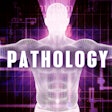
The American Association for Clinical Chemistry (AACC) is hailing work that has established transgender reference intervals for common clinical laboratory tests, as reported in a study published May 18 in the Journal of Applied Laboratory Medicine.
Researchers led by Dr. Matthew Krasowski, PhD, of the University of Iowa Hospitals and Clinics, recruited healthy transgender and nonbinary individuals from clinics specializing in transgender medical care who had been prescribed either estradiol (n = 93) or testosterone (n = 82) for at least 12 months.
"Here, we established reference intervals for common clinical chemistry analytes in transgender people administered either feminizing or masculinizing hormone therapy. These results help promote evidence-based medical care for the transgender and nonbinary population," Krasowski said in an AACC news release.
At least 80% of transgender people have either taken gender-affirming hormone therapy or want to take it at some point so that they can express their gender in a way that makes them feel comfortable, according to the AACC. Yet one side effect of this hormone therapy is that it changes results for common laboratory tests.
Thus, there is a critical need for accurate transgender-specific reference intervals, which are the ranges of lab values observed in a healthy population that are used to determine whether individual lab results are normal or concerning, the AACC said.
Key findings of the study suggest that transgender individuals receiving either masculinizing or feminizing hormone therapy experience significant changes in some analytes that have sex-specific variation in the cisgender population, the researchers wrote.
"The clearest shifts toward affirmed gender were seen with enzymes for the estradiol and testosterone cohorts and with creatinine and HDL in the testosterone cohort," they stated.
Reference intervals are essential to high-quality medical testing; by determining them for transgender individuals, this research could lead to significant improvements in health care for this vulnerable patient population, the AACC said.



















